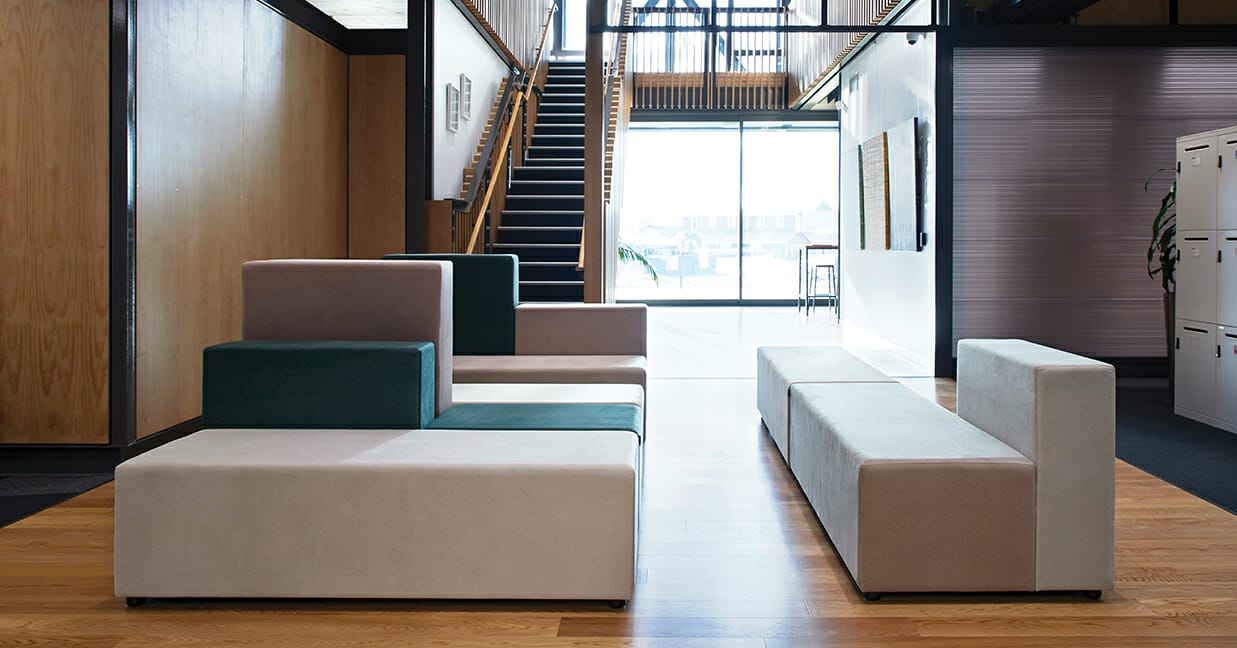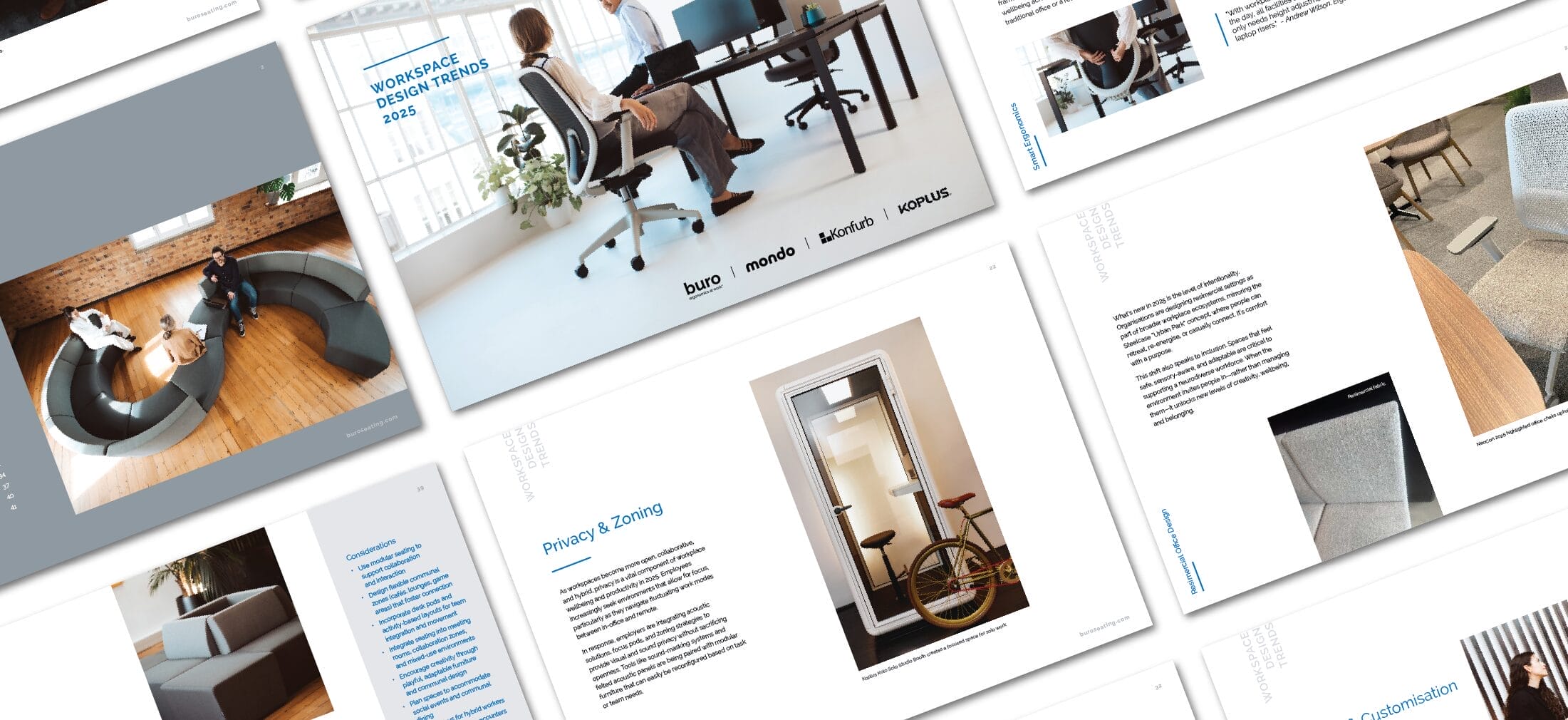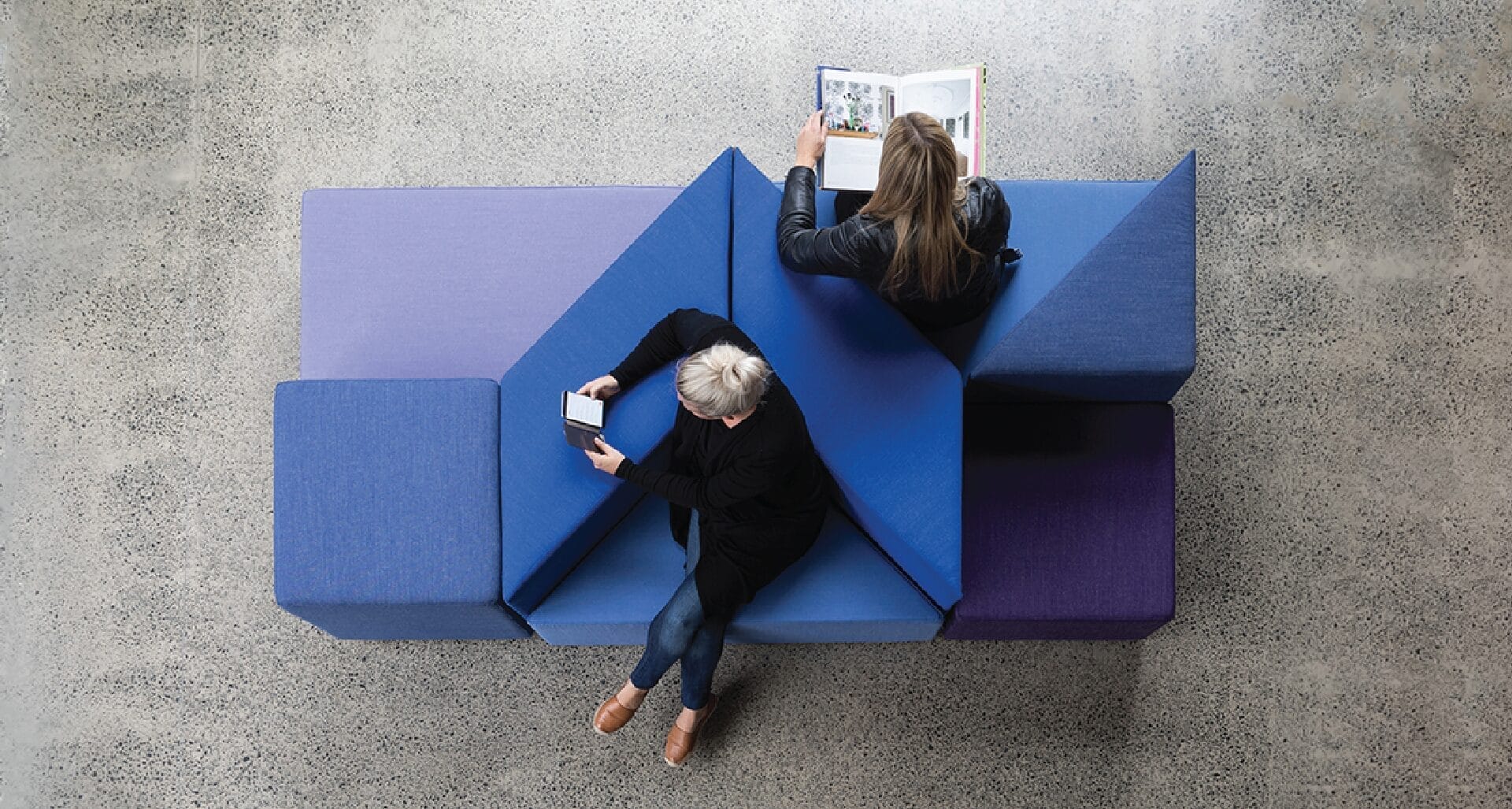The Covid-19 pandemic has changed the way we work forever. More of us can now work remotely from home, most employers offer hotdesking or hybrid working arrangements, and there’s greater acceptance that jobs can be performed beyond the confines of the office.
While our relationship with the office has evolved, it’s still vital to a productive and happy organisation. Many of us enjoy working from home but still yearn for the social connections, collaboration and creativity that come from workplace interactions.
Employee expectations of the workplace have also changed post-Covid. They want high-quality spaces that support health and wellbeing, reduce stress and discomfort, and lay the foundation for great work and positive team building.
The future is hybrid, so it’s vital that organisations adapt their environments accordingly. As employers look to strike the right balance between flexible working and enticing people back to the office, so-called touchdown workspaces have become an increasingly popular option in recent years.
What is a touchdown space?
While they might sound like something you’d find on an American football field, a touchdown space can deliver a real boost to your organisation through a few simple design changes.
Touchdown workspaces are purpose-built office nooks for short bursts of focused work, designed for people working for part of the day. They allow flexible workers to drop into a hybrid office and set up their laptops to conduct work, debriefs, catch-ups or meetings.
Some companies, including US tech company Dropbox, have done away with dedicated desk spaces completely as they look to reshape the future of work, putting touchdown spots in their place.
Users of shared workspaces, such as co-working facilities, will probably be familiar with the concept. Touchdown spaces are typically offered alongside dedicated desks to hybrid workers on a first-come, first-served basis, and can be booked in advance.
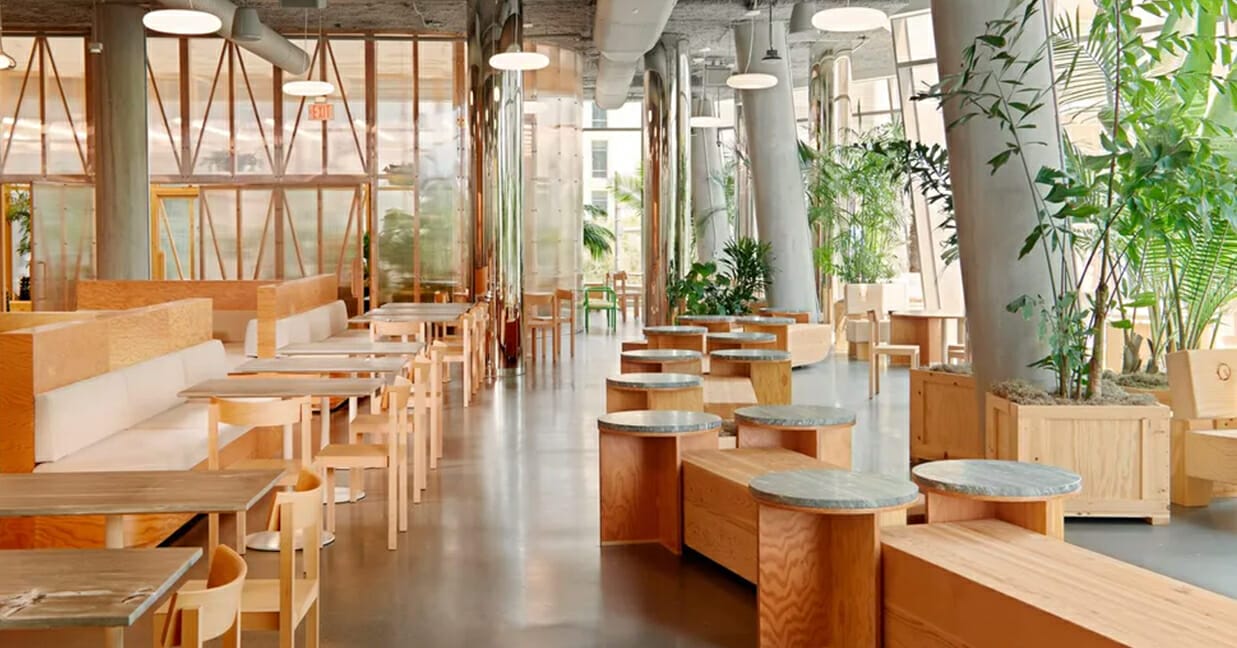
Dropbox’s Studios have ‘touchdown workspaces’ rather than dedicated desks for relaxing or working. Credit : Dropbox
How are touchdown spaces used?
Touchdown spaces are a great option for businesses that want to support a flexible or hybrid working environment. They provide hotdesking employees with a convenient and comfortable place to work, and allow other workers to move to different parts of the office if they choose.
A well-designed touchdown space can encourage collaboration, improve engagement and creativity and lead to better performance and productivity.
Touchdown workspaces can suit all kinds of staff from those working on external projects and checking in at HQ, to part-time workers who hotdesk.
What do they look like?
Touchdown spaces can vary depending on an organisation’s needs, but generally, they’re designed to be flexible and adaptable. They usually come with a range of seating options, such as lounge chairs and sofas, and workstations like desks and tables. Furniture design in a touchdown workspace usually allows employees to create a partition from the rest of the office space.
A great touchdown space will also have all of the bells and whistles that staff need to be productive; wi-fi, power outlets, and printing facilities.
How to design a touchdown workspace
When designing a touchdown space, you’ll need to think about your employees. What is useful for them? Will they have enough space to perform their tasks? What are their specific needs? You’ll need to answer all of these questions ahead of the design process.
A touchdown workspace should be a convenient, comfortable, and functional workspace for staff. Try to incorporate flexible and adaptable design elements to boost productivity and wellbeing.
Here are four key factors to think about when designing a touchdown workspace:
1. Location, location, location
It sounds simple, but it’s probably the most crucial aspect of the design process. Will your touchdown space be convenient and accessible for staff?
Take the main office of social media platform LinkedIn. The US company’s new hybrid office has its social areas closer to the entrance, while its touchdown workspaces are positioned deeper into the building to encourage focus and concentration.
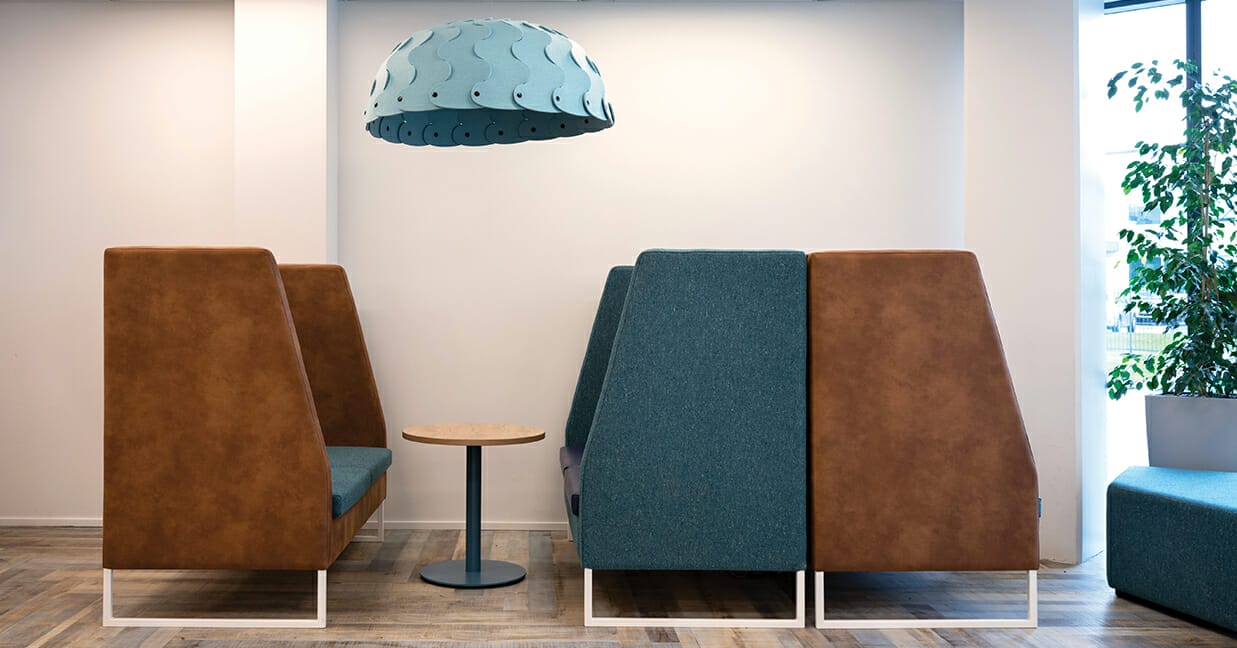
Konfurb Studio 2 seater booths featured in ICT collaborative space, Auckland.
2. Flexibility
A touchdown space should be adaptable and easily reconfigured to suit different tasks and activities.
While one person might need the touchdown space to do some solo work, another employee might want to hold a brainstorming session or group meeting.
When building your touchdown workspace, a range of office furniture configurations can make things flexible.
Linkedin used a “postures matrix” when designing its new hybrid office, (in other words, matching furniture ergonomics with different tasks). Your touchdown space will also need furniture to suit everybody in the organisation.
Search engine giant Google, meanwhile, has a unique approach to touchdown workspaces, creating “team pods”. Google workers can create office “pods” using chairs, desks and storage units for meetings, disassembling the furniture after they’re done. The company is even experimenting with a wheeled robot that can create inflatable walls to create impromptu partitioned spaces.
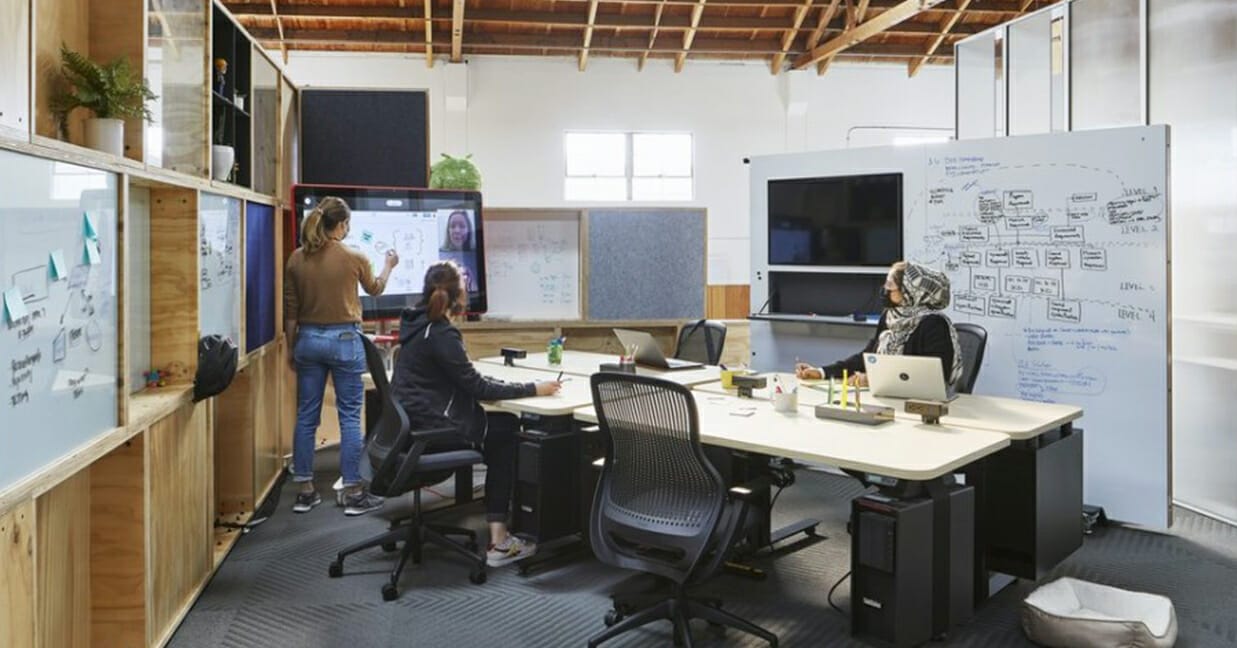
Google office – A Team Pod can be assembled and quickly disassembled. Credit: Google.
3. Seating options
A touchdown office should have modular and reconfigurable furniture, and a range of seating options.
Ergonomic and adjustable seating, such as office chairs with adjustable height and lumbar support, can help with desk work, support health and wellbeing, and prevent fatigue and discomfort.
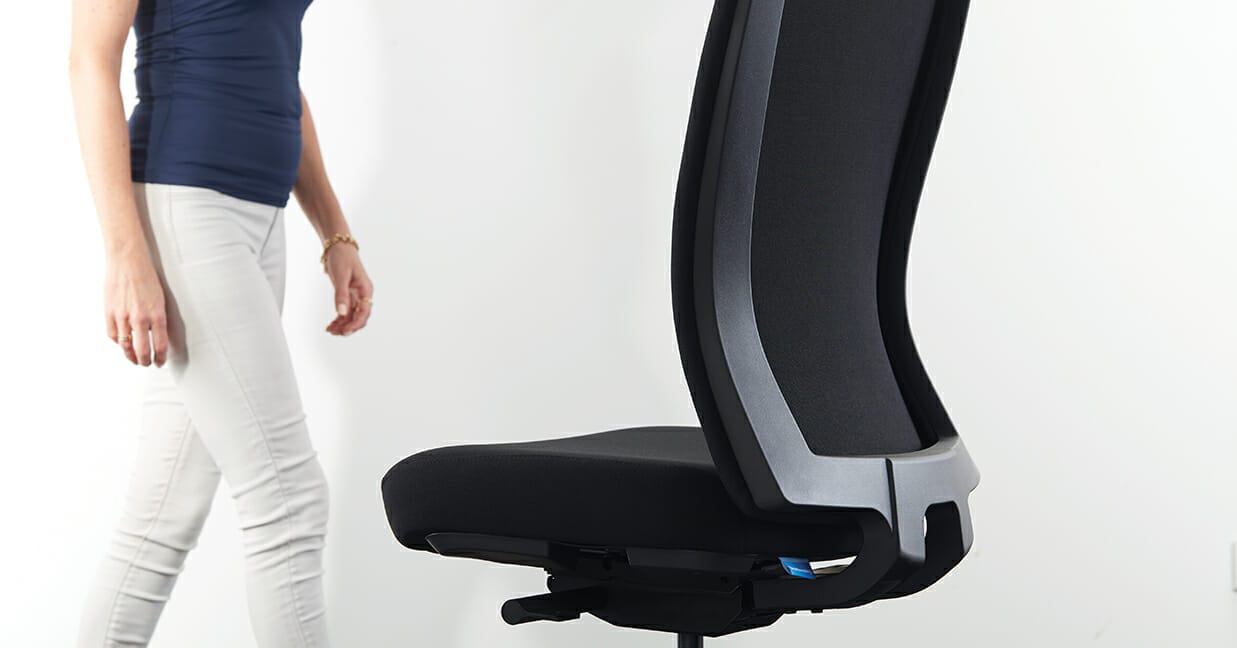
Buro Mentor ergonomic chair features Buro Dynamic Intelligence™ technology.
4. Comfort and aesthetics
Your touchdown space should be comfortable and inviting, the kind of environment that encourages your team to go back to the office rather than stay at home. Use colours, textures, and artwork that reflect your company’s culture and values, and give your staff a subconscious lift.
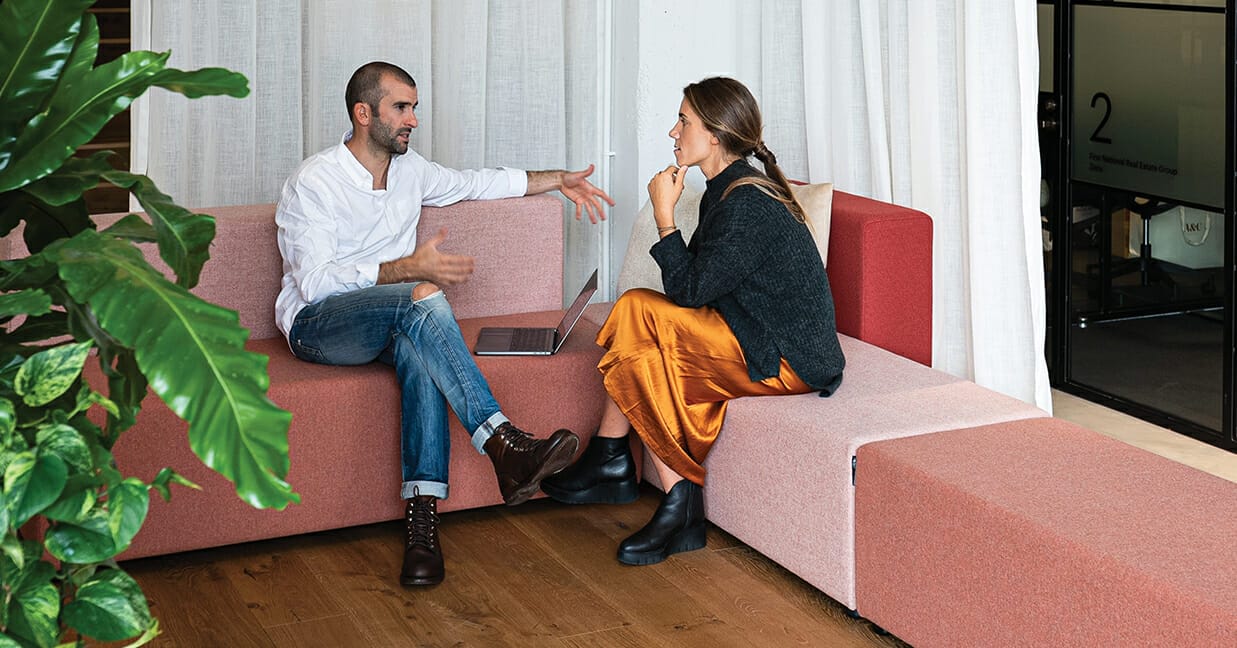
Choose the right furniture for your touchdown space
Buro offers a wide range of options for organisations looking to design and create the perfect touchdown workspace.
Tall-backed booths, such as the Konfurb Studio booth and the modular Konfurb Star, promote privacy and a focused atmosphere.
Konfurb Studio booth seating is designed to create a quiet meeting space — even in a bustling office environment. You can choose one, two, or three-seater booths, ideal for small meetings and individual work.
The Konfurb Star Family has a little bit of everything. With customisable, collaborative soft seating, employees can choose from eight different ottomans, seat and back options and custom fabric to create a unique configuration.
If your workplace is always on the move, stools and swivel chairs can be a great option. The Konfurb Fly Barstool Swivel and Konfurb Fly Barstool Sled are designed for busy, collaborative environments.
The Konfurb Fly Barstool Sled provides comfort and support during meetings, making it the perfect choice for a bustling workplace.
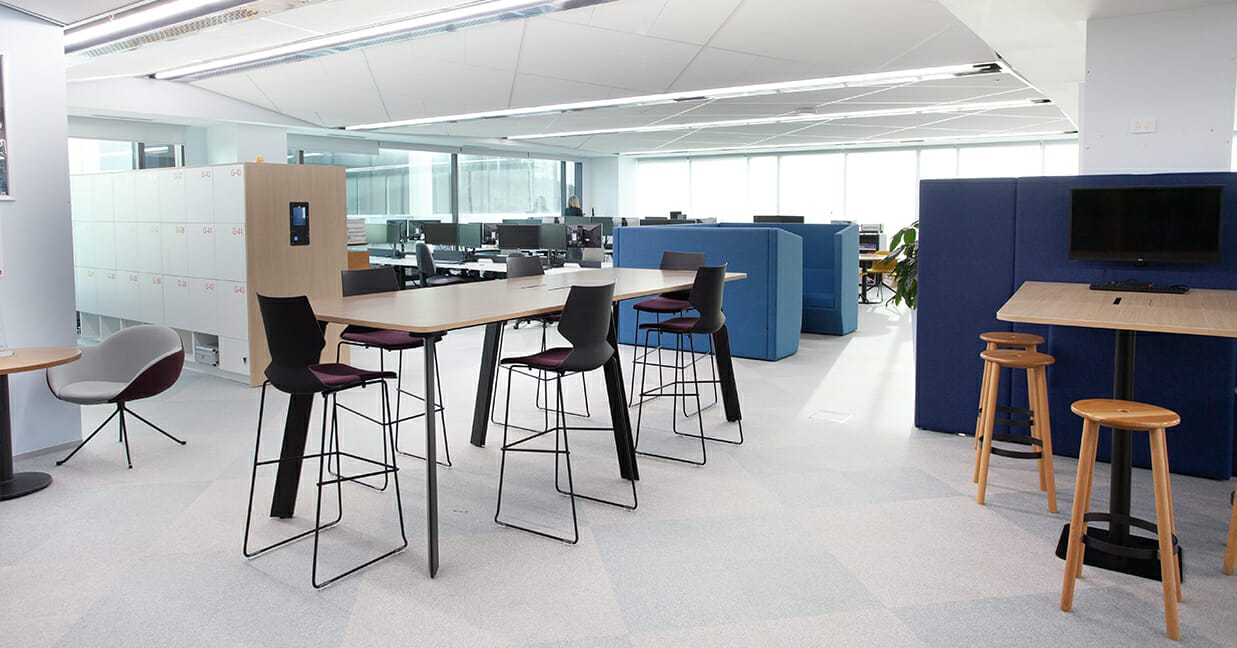
Konfurb Fly Barstool, with seat pad and custom high back, featured in the Genesis Energy office, Auckland. Supplied by Vidak. Interiors by 4Work.
For a more open touchdown workspace, customisable soft seating, such as the Konfurb Eightby4 Series and the Konfurb Block Series can be configured to suit any space and any need, with several options for custom upholstery.
Discover more about touchdown workspace seating
With so many options for a touchdown office, it can be difficult to know where to start. Check out Buro’s product range to find inspiration with modular soft seating, stools, visitor and meeting room chairs, and create your very own flexible touchdown workspace.

